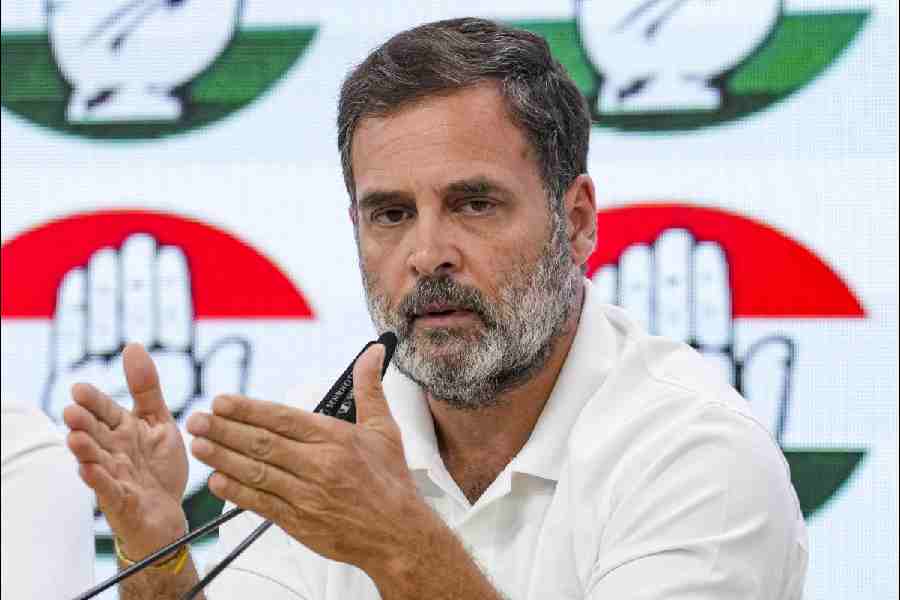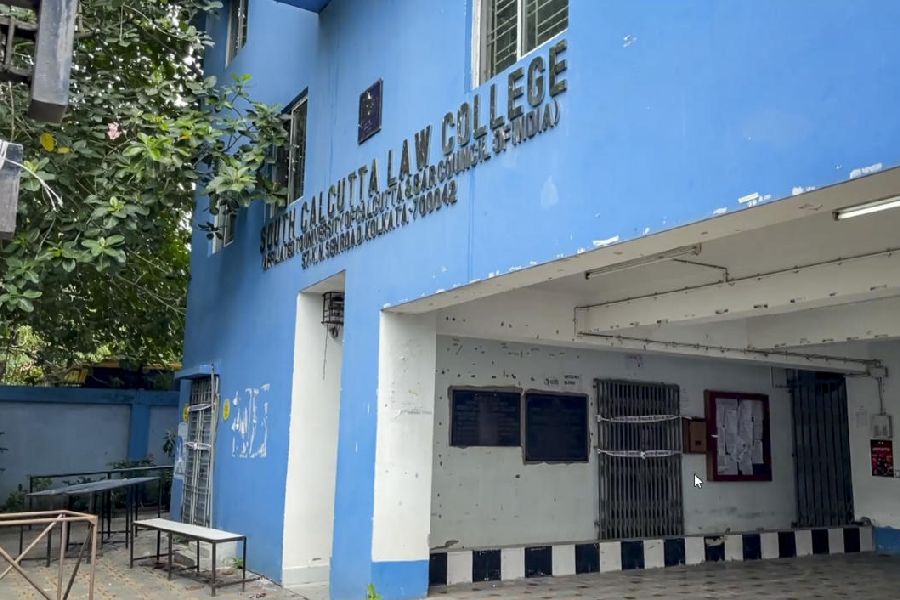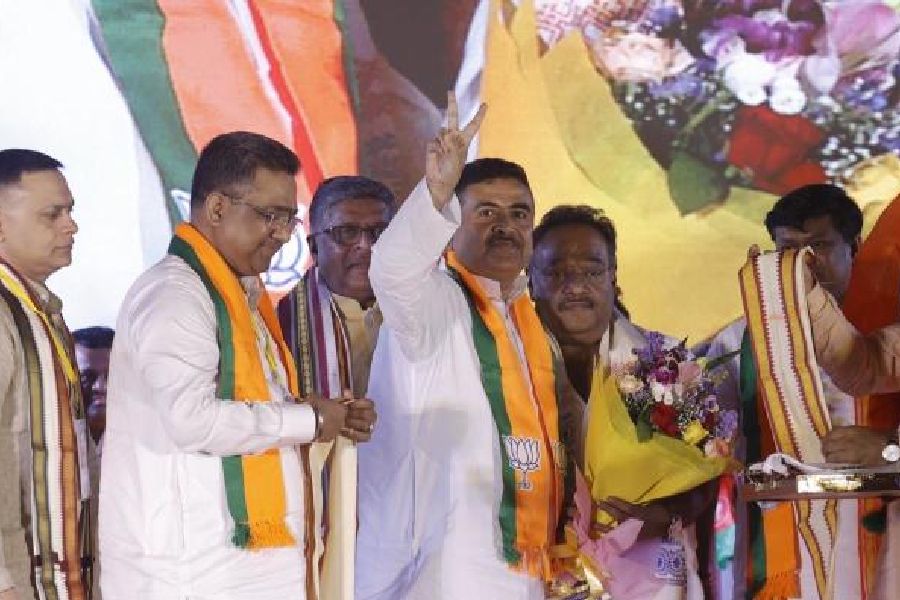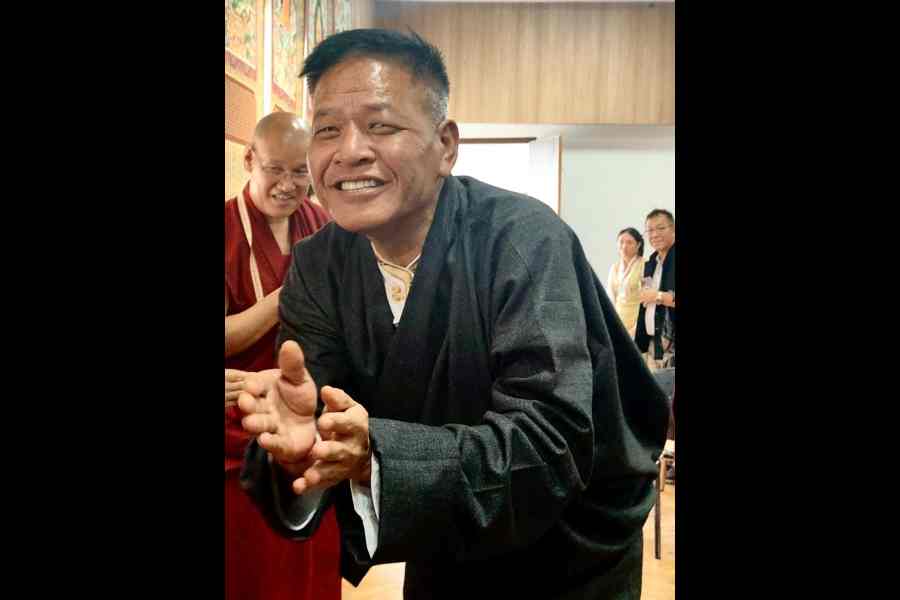
Bhubaneswar, April 21: An era in Odisha politics has drawn to an end with the passing away of three-time chief minister and former Assam governor Janaki Ballabh Patnaik, who died after a cardiac arrest at Tirupati, the pilgrimage town of Andhra Pradesh, early this morning.
Popularly known as "JB" and widely acclaimed as the Bhishma Pitamah of state politics, the 89-year-old leader was a rare combination of a scholar, journalist, litterateur and a wily politician. His ability to connect with party leaders and people was unique. Prime Minister Narendra Modi acknowledged this when in his tribute to the leader he described him as a pillar of Odisha politics who "always connected with people and their aspirations".
While President Pranab Mukherjee, a long time friend, governor S.C. Jamir and chief minister Naveen Patnaik spoke of JB and his contributions in glowing terms, the state government declared a holiday today as a mark of respect for the departed leader and announced a week's mourning.
Patnaik was born at Rameswar village in Khurda district on January 3, 1927. After completing his early education at Khurda High School, he did his BA in Sanskrit from Utkal University and followed it up with a postgraduate degree in political science from the Banaras Hindu University.

Patnaik, who began his career as a journalist with Odia magazine Paurusa, soon came in touch with the legendary Harekrushna Mahatab, his mentor in politics and the founder of the daily Prajatantra. Mahatab's Prajatantra gave the young JB yet another opportunity to hone his journalistic skills.
However, in 1950 he made a firm entry into Congress politics becoming the president of its youth wing in the state. He tasted electoral success in 1971 when he was elected to the Lok Sabha from Cuttack and was made a deputy minister of defence in the Indira Gandhi ministry. He was elected to the Lok Sabha for the second time in 1980 and became the minister for tourism and civil aviation and labour at the Centre.
During this period, his proximity to Sanjay Gandhi, who many still see as the villain-in-chief of Emergency, became a talking point. "He was very close to him which gave him easy access to Indira Gandhi," recalled a veteran.
The big moment in JB's political career was when he led the Congress to a landslide victory in the state in 1980 with the party winning a record 117 seats in the Assembly and him being elected the legislature party leader. His election as chief minister put an end to a period of long phase of political instability in the state as he remained in power for an interrupted stretch extending over nine years. Even his long time critic, excise minister and BJD veteran Damodar Rout acknowledged his political acumen describing him as the "Chanakya" of Odisha politics.
This was his most creative phase as a leader when he introduced some revolutionary poverty alleviation schemes such as Rs 2 a kg rice for people below poverty line (BPL) in the 43 Integrated Tribal Development Agency (ITDA) blocks of the state and gave a push to the KBK scheme for the most backward Kalahandi-Balangir and Koraput region. While the foundation stone for the Talcher-Sambalpur railway line was laid during this period and white revolution was ushered in with the set up of Odisha State Co-operative Milk Producers' Federation Limited.
One of his lasting contributions to the state has been to ensure direct air and rail connectivity between Delhi and Bhubaneswar that he turned into a modern city along with Cuttack, the old capital. Bhubaneswar soon had landscaped parks on the one hand and flourishing industrial estates on the other.
Once again it was Patnaik who coined the famous slogan - "1000 industries in 1000 days". The slogan set the tune for massive industrialisation in the state. While big players such as National Aluminium Company Limited (Nalco), Paradeep Phosphates and Birla Tyres flocked to the state, small and medium industrial units mushroomed at Chandaka and Rasulgarh in Bhubaneswar, Jagatpur in Cuttack and Kolunga near Rourkela.
"If Odisha is today the most preferred investment destination in the country, credit for this should also go to him," said Congress veteran and former minister Jagannath Patnaik.
But JB, the successful politician, erudite Sanskrit scholar and litterateur, who was feted by both state and central Sahitya Akademi for his works of translation, was no stranger to controversies some of which surfaced towards the end of his third term as chief minister. While the estranged wife of an Indian Forest Service officer accused him of trying to shield her tormentors, his government also faced criticism following the gruesome killing of Australian missionary Graham Staines and his two children in January 1999. The forced the Congress high command to ask him to step down.
But setbacks notwithstanding, JB continued to be a major factor in Odisha politics, a fact that the central party leadership could not ignore but was also not very comfortable with. Finally, it decided to put him to pasture by sending him to the Raj Bhavan in Assam. It a tribute to his political resilience that while many UPA-appointed governors were eased out by the succeeding Modi-led NDA government, he stayed put till the end of his term.










